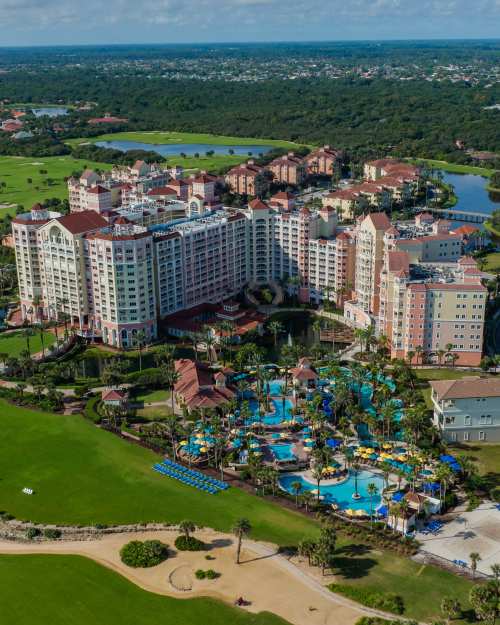Introduction
Palm Coast, Florida, nestled along Florida’s scenic Atlantic coastline, offers residents and visitors warm, sunny weather year-round. With comfortable winters, long summers, and proximity to the beach, Palm Coast is an ideal location for anyone looking to enjoy a mild climate in a coastal paradise. This article covers everything you need to know about the weather in Palm Coast, FL, from average temperatures and rainfall to seasonal tips for planning your activities.
Palm Coast Weather Overview
Palm Coast experiences a humid subtropical climate, which means warm, humid summers and mild, drier winters. The year-round moderate temperatures make it an attractive destination for outdoor activities and water sports enthusiasts alike.
Average Temperature in Palm Coast, FL
Spring (March to May)
• Temperature Range: 60°F to 85°F (16°C to 29°C)
• Spring in Palm Coast offers warm temperatures and lower humidity, making it perfect for outdoor adventures like hiking, fishing, and beach outings.
Summer (June to August)
• Temperature Range: 72°F to 90°F (22°C to 32°C)
• Summers are hot and humid, with occasional afternoon thunderstorms typical of Florida’s weather. Locals and tourists flock to the beaches, and water sports are especially popular during these months.
Fall (September to November)
• Temperature Range: 65°F to 85°F (18°C to 29°C)
• The fall season brings slightly cooler temperatures, lower humidity, and fewer rain showers, creating an ideal climate for golfing, nature walks, and exploring Flagler County.
Winter (December to February)
• Temperature Range: 47°F to 70°F (8°C to 21°C)
• Winters are mild in Palm Coast, with daytime highs in the low 70s and cooler nights. While temperatures rarely dip below freezing, light jackets and layers are recommended for chilly mornings and evenings.
Monthly Weather Averages in Palm Coast, FL
Month Average High (°F) Average Low (°F) Rainfall (inches)

Rainfall and Storm Season
The rainy season in Palm Coast typically spans from June to September. August tends to be the wettest month, with an average of nearly 7 inches of rainfall. Afternoon thunderstorms are frequent but usually brief.
Hurricane Season
Palm Coast, like much of Florida, is affected by hurricane season from June through November, with peak activity typically in September. It’s essential for residents and visitors to stay informed about potential storms and follow local weather advisories.
Humidity Levels in Palm Coast, FL
Humidity in Palm Coast is highest during the summer months, often exceeding 80% on peak days. The high humidity, combined with summer temperatures, can make it feel warmer than the thermometer reads. However, the sea breeze often provides relief, especially along the coastline.
Palm Coast Seasonal Activities and Weather Tips
Spring Activities
With temperatures ranging from the 60s to mid-80s, spring is ideal for beach days, outdoor festivals, and nature exploration at local parks like Washington Oaks Gardens State Park.
Despite the high temperatures and humidity, summer is the perfect time for beachgoers, swimmers, and boaters. Many Palm Coast locals enjoy early morning activities to beat the heat, including fishing, paddleboarding, and golfing.
Fall Activities
Lower humidity and pleasant temperatures make fall a favorite season for both locals and visitors. This is a great time to visit Palm Coast’s golf courses or take a scenic drive along the A1A coastal highway.
Winter Activities
With mild winters, Palm Coast is a popular spot for snowbirds and retirees escaping the colder northern climates. Winter is ideal for golfing, tennis, and hiking without the intense summer heat.
Palm Coast Weather FAQs
1. Does Palm Coast experience hurricanes?
Yes, Palm Coast is occasionally impacted by hurricanes, particularly during the Atlantic hurricane season from June to November.
2. What is the best time of year to visit Palm Coast, FL?
Spring and fall are generally the most comfortable times to visit Palm Coast, offering mild temperatures and lower humidity. These seasons are ideal for outdoor activities and exploring local attractions.
3. How hot does it get in Palm Coast during the summer?
Summer temperatures often reach the upper 80s to low 90s, with high humidity. Afternoon thunderstorms are common, bringing brief but intense rain showers.
Why Choose Palm Coast for Year-Round Sunshine?
Palm Coast’s climate, with its mild winters, hot summers, and moderate spring and fall seasons, offers year-round opportunities for outdoor fun. Whether you’re a permanent resident or just visiting, Palm Coast’s weather provides a perfect backdrop for experiencing the beauty of Florida’s Atlantic coast.

